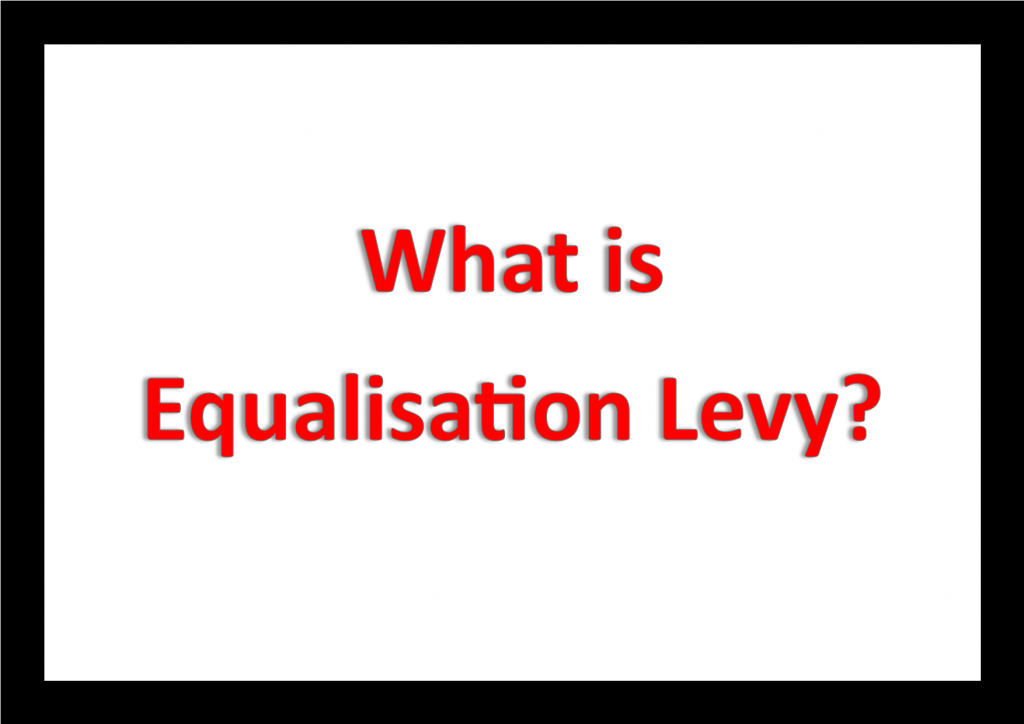The equalisation levy as a tax was imposed on non-resident digital firms who get income in India and transfer it to their registered locations overseas. Purpose of this practice by MNCs was to avoid paying tax in India.
Equalisation levy has relevance in the context of increased digitalisation causing tax revenue losses for the gobvernment. It is a universal problem as several governments losses tax revenue from the income earned by digital MNCs.
It is to overcome this tax disadvantage for India that the government has imposed an equalisation levy.
Download PDF: What is equalisation levy
Equalisation levy introduced in India is similar to the famous ‘google tax’ (Diverted Profits Tax) imposed by the UK government on digital MNCs.
The equalisation levy was launched by the government in 2016. It was imposed initially on online advertising of digital MNCs like Google. Later, it has been extended to ecommerce firms as well.
Here, the budget 2020 proposed extension of the equalisation levy on ecommerce firms. But the ecommerce firms, digital MNCs and startups are requesting postponement of the levy for nine months.
Still, the Government is stern on the time for the extension of equalisation levy that was imposed on digital advertising of MNCs like google to ecommerce firms.
|
Who is an ecommerce operator? For equalisation levy tax purposes, an “e-commerce operator” is defined as a non-resident that owns, operates or manages a digital or electronic facility or platform for online sale of goods or the online provision of services. The “e-commerce supply or services” on which the equalisation levy applies are: · Online sale of goods owned by the e-commerce operator · Online provision of services provided by the e-commerce operator · Online sale of goods or provision of goods facilitated by the e-commerce operator (i.e., when the operator provides a platform for others). · Any combination of the above |
What is equalisation levy?
Equalisation Levy (also known as ‘Google Tax’) was introduced by the government in the budget 2016 as a tax on payments for digital advertisement services received by non-resident companies who have no permanent establishment (PE) in india. The levy was applicable if the amount exceeded Rs 1 lakh a year. The equalisation levy’s tax rate was set at 6 per cent. But the levy will only apply to B2B transactions.
|
Equalisation levy – a variant of the famous ‘Google tax’ The equalisation levy was designed to tackle those digital companies who create income in india and transfers it to other countries to skip taxes. There are continuous complaints from governments that big tech companies, especially MNCs are inventing new arrangements to avoid taxes. The MNCs are taking out profit from the activities in a host country but shift it to a tax haven to escape from taxes. An important instance was Google’s non-payment of tax in the UK despite its huge revenue there. Google has made $5.6bn (£3.4bn) of revenues in the UK during 2015, but it paid corporation tax of just £20.4m. This reduced tax payment at the source country (UK) was made possible as Google in record creates nearly all of the profits in Ireland. At the same time, the company doesn’t pay much tax in Ireland either as Ireland is gives favorable tax treatment to companies. Most of the money from UK were shifted to Google Ireland Holdings, which is a Dublin-registered company but located in Bermuda for tax purposes. Several US technology companies, including Apple, Microsoft and Facebook, use the similar “Double Irish” structures to avoid taxes in UK. What is google tax? UK then introduced the Diverted Profits Tax (DPT) in 2015 to tackle shifting of profits by big tech companies to tax havens. Since the law as emerged to tackle the Google type practice, the tax is nicknamed as ‘google tax’. The DPT was introduced in the background of concerns that Google parent Alphabet Inc. and other global tech companies were avoiding local corporate taxes by stashing profits offshore. DPT was intended to apply to large multinational enterprises with business activities in the UK who enter into ‘contrived’ arrangements to divert profits from the UK to tax havens by avoiding a UK taxes. The DPT as a new tax, was set at a rate of 25% of diverted profits relating to the company’s UK activity. A version of google tax was introduced in India’s budget 2016 In order to tap tax on income accruing to foreign e-commerce companies from India, the budget 2016 has instructed that online advertisement payment exceeding Rs 1 lakh a year to a non-resident, who does not have a permanent establishment, , will be taxed at 6% of gross amount paid, as Equalization levy. But the levy will only apply to B2B transactions. |
Extension of equalisation levy to ecommerce companies: budget 2020
Later, in the 2020-21 Budget, the government extended the levy to e-commerce companies. The applicable tax rate is two per cent (plus a sur-charge) on amount of consideration received/receivable by an e-commerce operator. This has come into effect from April 1.
Here e-commerce operator means a non-resident who owns, operates or manages digital or electronic facility or platform for online sale of goods or online provision of services or both. The levy will be paid by every e-commerce operator for the quarter of the financial year by seven days from the end of quarter except the last quarter. This means due date for April-June quarter would be July 7, July-September quarter would be October 7 and October-December quarter would be January 7 but March 31 for January-March quarter.
The present guideline says the levy will not be applicable for any e-commerce operator (making/providing/facilitating e-commerce supply or services) with a permanent establishment in India. Also, an operator with annual turnover up to ₹2 crore will not be asked to pay the levy.
*********










